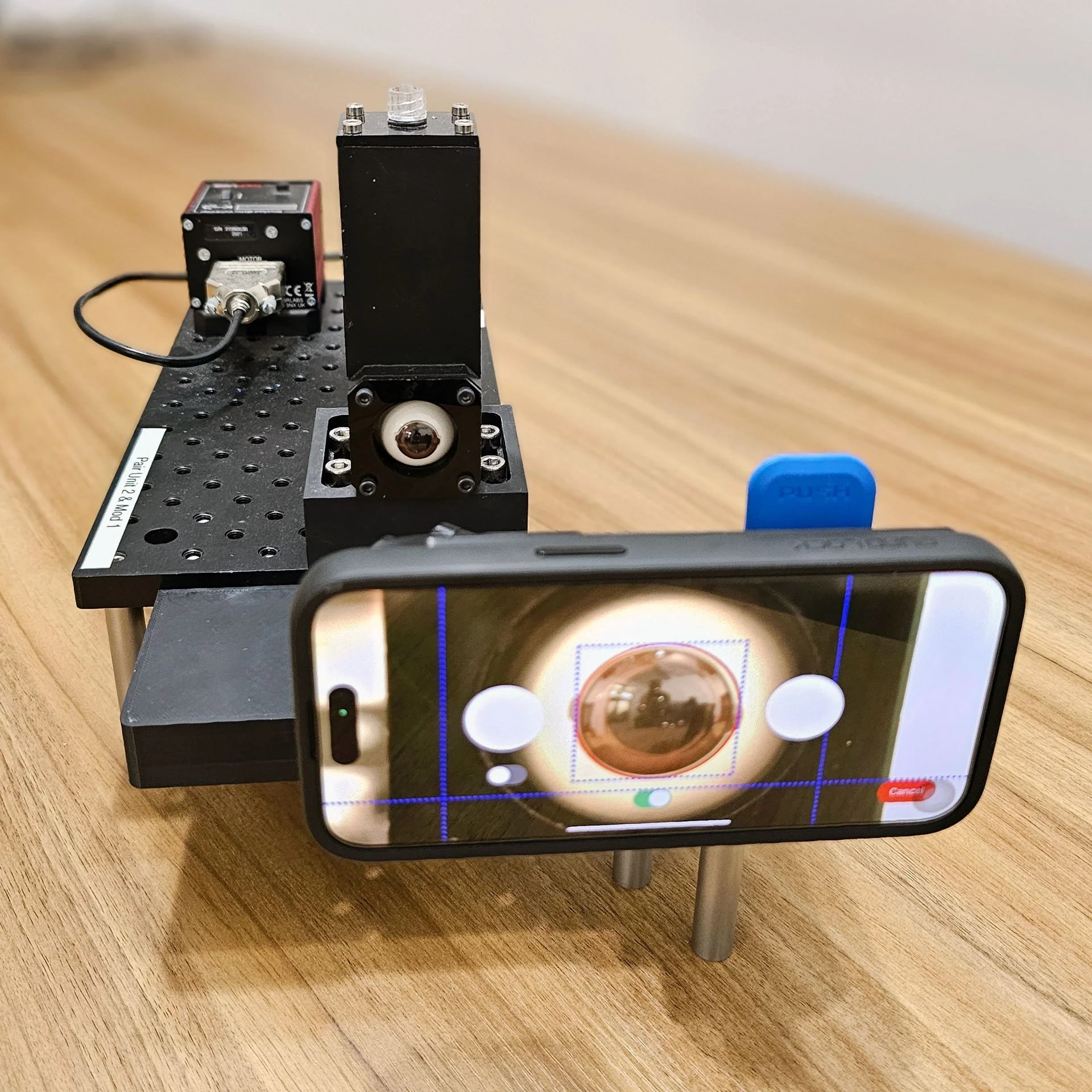Performance
Physical Model (Robotic Eye)
OcuDoc developed a robotic eye to perform an early benchtop testing of our algorithm. The robotic eye was designed like a human eye, and allows changes in focal length, lens characteristics, retina characteristics, and other specifications. This ability to change parameters of the eye is similar to putting one thousand different pairs of glasses on a person to measure the changes in their vision with different prescription lenses. We didn't need to do that. We just made small adjustments on the robotic eye and measured the changes with the reference devices. We then took the sensor data with a smartphone from each change of the robotic eye in order to compare the sensor data to a reference device’s data. This is how we built our first database. The algorithm showed incredible accuracy with the robotic eye, so we moved on to building a database with human eyes.
With regard to myopia, we are able to change the focal length of the robotic eye, which is equivalent to changing the axial length of the eye and therefore, myopia monitoring. We trained the AI with the robotic eye in the beginning, and now we have thousands of human eye data to build out the database.
Used to simulate Myopia and Hyperopia
Can have Rx added
Range of +/- 12D
Closed loop position better than 1 micron
Validated against Zeiss IOL Master 300
Validated against Shin-Nippon K900
Used to develop the OcuDoc algorithm and AI training model
Millions of data points generated
Data Efficacy
OcuDoc correlated 0.9998
T-test was performed on the data.
Model Eye (M=25.8, SD =1.39)
IOL Master 300 (M=25.98, SD=1.41) which had a t(24)=31.85, p=<0.0001
The Bland-Altmann shows the low axial lengths are being overestimated and high axial lengths are being underestimated
This can be corrected in calibration




